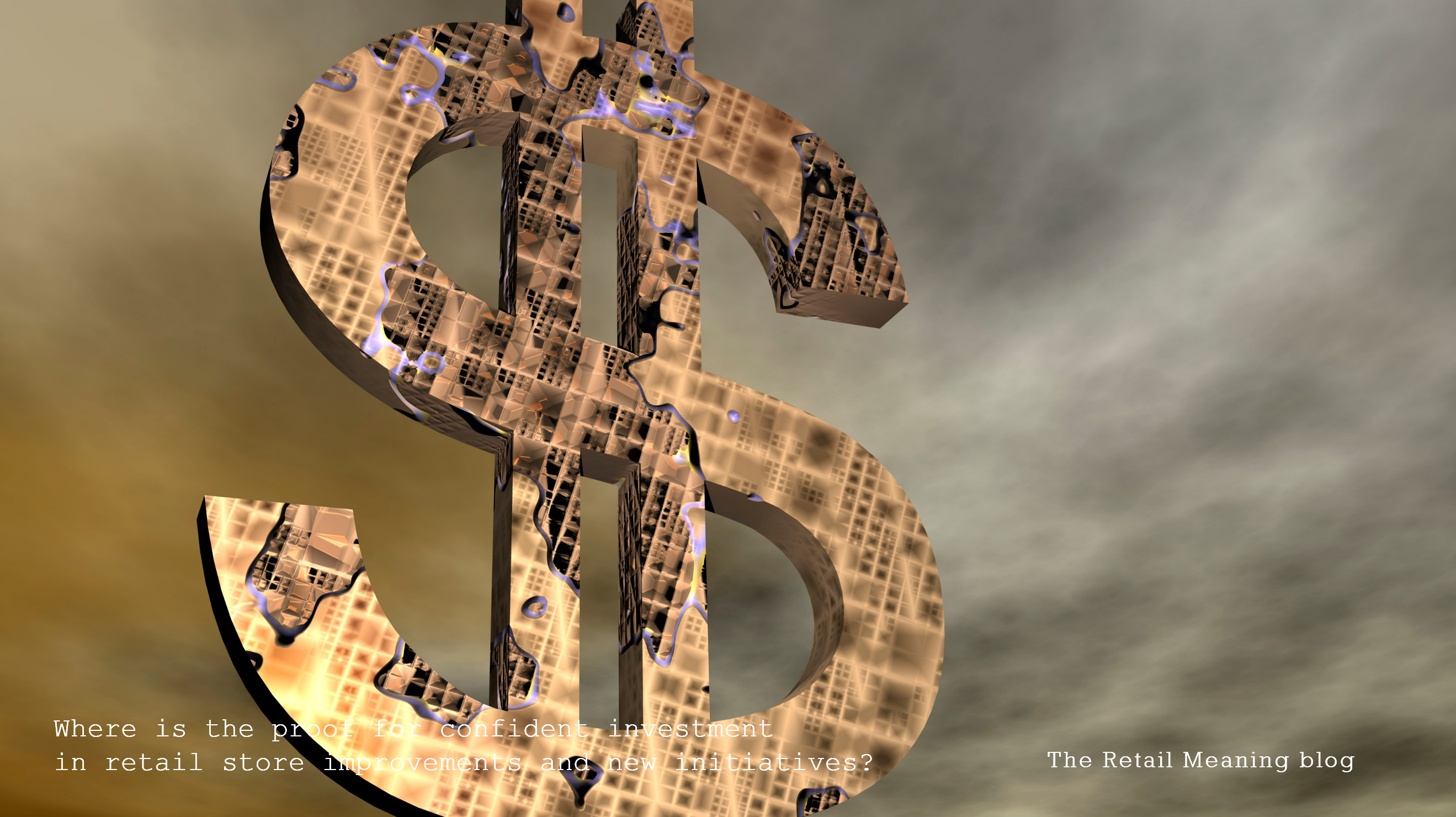Let’s face it any changes to our stores are investments.
Some initiatives are clearly more of a financial investment with definite budgets and costs, but in times were retail teams are lean and schedules already full of essential tasks then sometimes investment in time, hours, days and weeks to develop and deliver something new in stores is more difficult to make.
More than ever retail CEOs and managers want proof, proof before the event that any investment of money, time or resource is going to be worthwhile, fundamentally through increased sales and profit but also through efficiency and in the saving of time and stress.
Some examples of where proof of investment in physical retail stores might occur…
- Should fashion retailers invest in mannequins and busts? Where is the proof that the physical and resource investment directly attracts more customers precisely to the busts and mannequins whilst increasing sales of skus directly featured on mannequins?
- Related to this the issue of windows. Retailers of all sectors have a wide range of opinions as to the value and ROI of their windows, not only in terms of how much to invest in each window but what physical or digital mechanics to invest in, the personnel support required to implement correctly, and the frequency of change that delivers best value. Is there any direct proof on how windows directly affect passer-by browsing and store entry percentages, not to mention increase in sales of product featured in windows?
- Range option width against unit depth in displays from footwear to sunglasses, mobile phones to electrical. What combination of option width, repetition of same options, variety of colour options, variety of enhancements overall has a positive effect on visual attraction of customers, conversion of passing traffic in store to browsers and ultimately sales? Where is the proof that more of less of better is the best proposition?
- Coordinated products or clear categories. How should a retailer segment and separate or combine products? Does combining products add additional sales or does it lose confused customers and reduce essential browse time? Where is the proof?
Retailing in stores in any sector is full of scenarios where the proof is desperately required to convince and justify widespread investment of money and time and resource in improving commerciality.
So where is the proof?

Traditionally experience of individuals and teams provided the only proof. And even today experience should not be underestimated. To have a room full of people of a huge variety of ages and experience does not create a flat playing field of opinions. All opinions are worthy but experience has weight and has the proof of previous actions and situations.
This experience is not just in first-hand actions but also experience in interpreting and extrapolating the right available data, the correct KPIs, to predict with some certainty where investment should logically be worthwhile.
Benchmarking of best practice and successful competitors is still very valid. If the top 5 operators in any market are analysed both qualitatively and quantitatively then the reasons why they are successful can be identified. With correct experience, new best practice processes and deliverables can then be adopted and be the focus for store investment.
However ultimately, only in your own stores through the testing of delivery options and through measuring correctly will “the golden proof” be gathered.
Store initiatives can be measured commercially by careful analysis of the correct POS data, and this is nothing new. However in store video analytics using cameras can now specifically provide evidence on how different approaches directly affect customer behaviour and then ultimately the POS numbers. A whole new group of parameters from attraction, engagement and dwell can be introduced into the picture.
POS data tells you what happens but analytics data can tell you why, and also uniquely, what is not happening and what could happen in your stores if other and additional initiatives were trialled.
The simple thing about gathering proof is that you must do something to prove or disprove. Benchmarking and analysing competitors add nauseum will only identify opportunities, it will never realise them.
So take a combination of benchmarking, analysis and a huge slice of experience to determine initiatives to test and prove. Use a limited budget wisely to gather proof of the value of initiatives.
Do this on a localised, small budget scale. But make no mistake you need to invest something to prove something worthwhile.
The danger of no proof is no initiatives which is the biggest risk of all.
